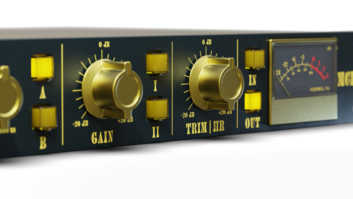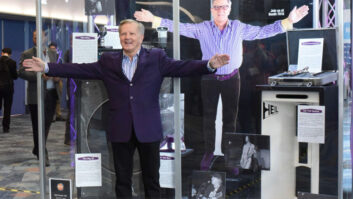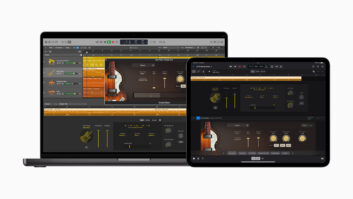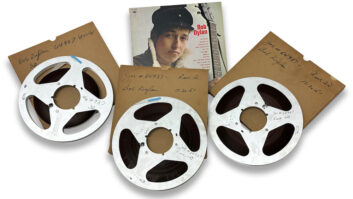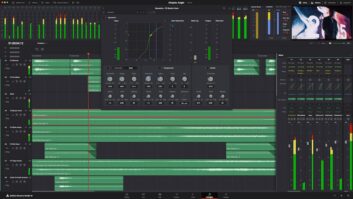Making Ride With Bob, Asleep at the Wheel’s Grammy-winning all-star tribute to the legacy of Bob Wills & the Texas Playboys, wasn’t too much of a stretch for the Austin-based group, which is currently celebrating its 30th anniversary. After all, their 1993 CD, A Tribute to the Music of Bob Wills & the Texas Playboys, attracted a bevy of guest country stars and similarly glowing reviews. And as AATW leader Ray Benson says with a laugh, “A couple of reviewers have pointed out that in a way every Asleep at the Wheel album is a tribute to Bob Wills, and that’s true to an extent. It’s part of who we are, and has been almost from the beginning. This project has a threefold purpose: One, it’s an Asleep at the Wheel vehicle; two, I’m trying to get the fact of Bob Wills’ importance to a wider audience; and three, I’m trying to get some of the younger popular country artists involved so they have Bob Wills’ music as part of their experience. That way it has a future.”
Ride With Bob actually features three generations of performers. Willie Nelson and Merle Haggard were big inspirations to Benson when he was starting out; in fact, Haggard’s 1970 LP, A Tribute to the Best Damn Fiddle Player in the World: My Salute to Bob Wills, “changed my whole musical direction,” Benson says. Benson’s generation is represented by the likes of Vince Gill, Reba McEntire, Lyle Lovett, Shawn Colvin, Steve Wariner and Manhattan Transfer. And among the relative young ‘uns are current country superstars the Dixie Chicks (whom Benson has known since they were in high school), Tim McGraw and Clint Black, and up-and-comers such as Mark Chestnutt, Lee Ann Womack, Tracy Byrd and the nouveau swing Squirrel Nut Zippers. In all, there are some 80 musicians on the CD, which took a year-and-a-half to make. The current lineup of AATW provides nimble backup throughout, managing to sound a lot like Wills’ band (steel guitarist Cindy Cashdollar really has the Playboys’ Leon McAuliffe down) but with a personality of its own. With each track boasting different singers and combinations of musicians, there’s lots of variety to the set-it ranges from fiddle tunes to weepy ballads to blues to jazzy swing numbers. Though it is the second installment in what Benson hopes will eventually be a four-volume tribute to Wills, it contains more of Wills’ best known material than the ’93 collection-including such nuggets as “New San Antonio Rose,” “I Ain’t Got Nobody,” “Right Or Wrong,” “Faded Love” and “Milk Cow Blues”; 17 songs in all.
Benson is not only a skilled singer, guitarist, bandleader and project organizer/cheerleader; he also knows his way around the recording studio-this guy can talk specs all day long in his deep drawl. (Though he has become synonymous with Austin, where AATW has been based for the past 26 years, Benson is actually from West Virginia, and the original band was formed there.) Much of the CD was recorded at AATW’s own Bismeaux Studio in Austin, with additional work done at various facilities in Nashville (Westwood Studios, the Music Mill, James Stroud’s Loud Recording, Hum Depot), the Los Angeles area (Mad Dog and Black’s Lab) and Willie Nelson’s Pedernales Studio in Austin. Among the engineers on the project were Larry Seyer (AATW’s guy), Frank Campbell, Mark Nathan, Cris Burns, Larry Greenhill, Michael Dumas, Billy D. Sherrill, Rusty McFarland and Benson himself.
“Bismeaux is a great place to work,” Benson says. “Larry [Seyer] and I have managed to make it a place with a combination of new and old technologies, and there’s no one I’d rather work with than Larry, who’s been with me for 20 years now. He’s a great engineer and also a great guitar player, a great singer and a computer programmer. We utilize all of his skills.” Together, Benson and Seyer equipped Bismeaux with a combination of customized gear and off-the-shelf boxes and recorders.
“We have a custom board,” Benson notes. “It was originally a D&R, but we rechipped it and took the mic pre’s out of the board. We took the chips out of the board because we wanted to put better chips in, and we didn’t really need the mic pre’s because they take up power and we weren’t using them anyway, because I’ve got 37 channels of outboard mic pre’s. I’ve got a whole bunch of different ones-two channels of Trident A-Range, two 1066 Neves. But mostly we use these cool mic pre’s we built ourselves. We had these great old RCA mic pre’s and then we built replica versions with some features on ’em, such as a power supply switchable to solid-state, and the tube power supply has a variac on it so you can actually vary the voltage to the mic pre and then the mic pre has variable input impedance taps. They have point-to-point wiring. They’re very expensive because the transformers in them cost hundreds of bucks apiece. But they sound amazing. So we have those mic pre’s and we have all these great old compressors and mics, but we record to the new ADATs, the M20s. The mic pre’s all go into a patchbay and go directly to the machines. The integrity of signal is everything in trying to get that big, warm, fat sound we love. We use the board mostly as a mixing device; it has [Audio Mate] moving faders. We helped develop the software system for it that’s Macintosh computer-based.”
Currently, Bismeaux is “two-and-a-half rooms, but we’re building another one right now,” Benson says. “We have the largest control room in the world because I’m 6-foot-7 and I’m real tired of being claustrophobic. The size of the room could be a problem because you lose some low-end but we’ve somehow rigged it so it works. We’ve got Genelec 1030As that sound really good. The main room is really huge, too; in fact, it’s so big we have a two-hole putting green in there, and it gets used a lot. We’ll usually put the band in the big room, and we have a separate smaller room for drums. We’ll isolate the piano with these giant gobos. A lot of times we’ll put the singers in the control room, in the large space between the console and the window. The Shawn Colvin/Lyle Lovett cut, ‘Faded Love’ was done that way. It was one take. For our kind of music, it’s real important to have both eye contact and physical proximity. For instance, on the Merle Haggard cut, ‘St. Louis Blues,’ there’s a lot of drop meter-it’s not all in 4/4. You’re listening to the singer, and he comes in when he wants, which was a hallmark of Bob Wills. That was really challenging, especially working with the big group that’s on that song. But the beauty of modern recording is that if somebody doesn’t make the change in time, you can go back and fix it. You can have great feel and you can also fix the rough edges.
“I grew up listening to these songs on old 78s, but that’s not the experience of most people anymore. I mean, those old Bob Wills records were mostly done with one microphone! But I want young people who are used to the incredible sonics we get on records today to relate to the sonic aspect of it and then get into the music and not have to say, ‘Oh, it’s all scratchy, and I don’t hear the bass drum or the bass,’ which were the usual complaints with those old records It’s funny, sometimes years ago when I’d audition players, the bassists would complain they had no idea what their parts should be because they couldn’t hear it on the old records!”
Benson says that most of the tracks were cut live in the studio with some vocals and a few solo overdubs recorded later. In all but a few cases, the guest artists sang with the band. “With Willie [Nelson], he was on the road, and we sent him the finished track [‘Going Away Party’]. But the Manhattan Transfer came down, and we cut their part live, and then Willie did his vocal six months later. Reba McEntire did hers live [on ‘Right Or Wrong’] in maybe two passes.
“You might notice that there’s a little bit of distortion on her vocals and on Tim McGraw’s [‘Milk Cow Blues’]. We had an old 47 and it was a little distorted, but I liked that. You listen to old recordings and you often hear quite a bit of distortion, particularly on vocals; it was something you dealt with. Most people didn’t have great limiters, or even if they did, a limiter can distort, too. So we kept a little on some of the vocals.”
The sound crew used a wide range of mics on the project including the requisite vintage Neumanns, Shure SM57s, an AKG C-24 (used as a drum overhead, and on some vocals and acoustic guitars), an AMS Soundfield on fiddle and horn sections (“great for getting both the instruments and the room,” Benson says) and the Electro-Voice RE2000 condenser mic: “We love it for horns, guitars and vocals. It’s a great underutilized mic. I use it for all my voice-over work.”
To ensure sonic consistency on the project, Benson and company carried some equipment-including the ADATs-with them when they traveled to Nashville. Mixing was done at Bismeaux. “We used very little processing,” Benson says. “I’ve got an EMT 251 that I like, but that’s mostly for vocals. I’ve got some Lexicon stuff, an Alesis Q2, but most of what you hear on the CD is room sound.”
If Bob Wills were alive today-he died in 1975, shortly after meeting Benson, as fate would have it-he’d no doubt be thrilled to see the fuss that’s being made about his music, and flattered that such a talented bunch had seen fit to honor him. He was a consummate musician, bandleader and entertainer, with a keen ear for great players. Ray Benson is following closely in his footsteps, keeping Wills’ music and spirit alive, and making some big footprints of his own in the process.
“The thing about Bob Wills’ music,” Benson concludes, “is that it was big enough to include blues and jazz and swing and country; almost anything you could think of fit with what he was doing. And that’s something we’ve tried to do in Asleep at the Wheel, too.”
